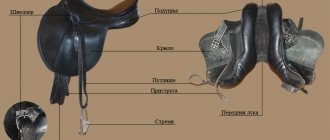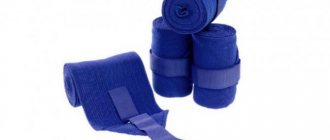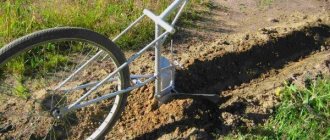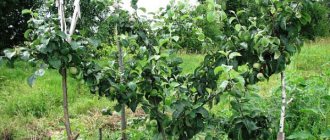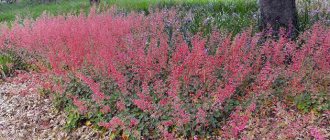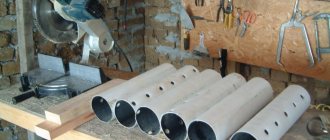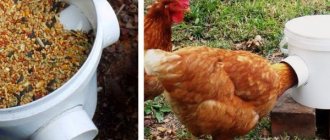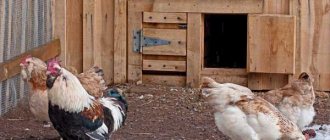A horse saddle is the most important riding equipment.
He can be called a kind of conductor between the horse and the rider. The comfort of animals and humans depends on the correct form of equestrian equipment. It is important not only to put the saddle on the horse correctly, but also to choose it correctly. Since this element is capable of influencing the movement and health of the animal. If you choose the wrong horse equipment, the animal will experience discomfort when riding, which can subsequently negatively affect its physical health. There have been cases where an incorrectly selected saddle caused back injuries to a horse .
It is worth understanding in more detail what types of riding equipment exist, as well as what they consist of.
The structure of a saddle for a horse
The saddle is a complex device, with a large number of components. What does it consist of? Main parts:
- tree;
- seat (frame);
- front and rear pommel;
- stirrups;
- Schneller;
- fender or fender (at a western saddle);
- saddle cushions.
This is the general composition of different types of saddles.
Before using each type, you must familiarize yourself with the individual diagram. Did you know? The heaviest stallion in the world is Sampson, who weighed as much as 1520 kg
.
Types of saddles
To say that the types of horse saddles are equal to the number of types of horses would be incorrect. There are many more of them. Horseback riding requires a lot of effort from horse and rider. Sometimes, in order for the animal to gain more speed, the seat must be uncomfortable for the rider.
In order to figure out what each of them is called, how much it weighs, what they are like, you need to spend a lot of time. Below are the main characteristics and differences, weight in kg and purpose for each type. Let's look at the walking one first.
Universal walking
This equipment is intended for all those who value comfort and also want to enjoy measured riding. It is used to cover medium distances at a leisurely pace and for horseback riding. The universal saddle combines the features of the other two:
- for dressage;
- for jumping.
Weight varies depending on model, but is approximately 5 kg.
English
It doesn't have a cone or pillows. Depending on the height of the front and rear canopies, the length, location or shape of the wings, and the depth of the seat, the English is divided into subtypes according to purpose:
- tourist;
- for equestrian polo;
- racing;
- hunting;
- competitive;
- ladies', etc.
Weight varies from 4 to 7 kg.
Pack
Designed for transporting packs. Its design allows the load to be evenly distributed and securely secured on the horse’s back. Protects the back from damage and reduces the pressure of the load on the horse's chest. Weight is small, about 2-3 kg.
Shelf
The name comes from the structural features of the saddle. It has two curved shelf boards. The design was also used in ancient times, when the horse was used mainly as a means of transport. Weight can reach up to 15 kg. In turn, it is divided into several types.
Shepherd's
Designed for herding livestock while riding a horse. Provides convenience and comfort for both rider and horse. Weight is about 7 kg.
Ladies'
Only suitable for horses with a long back. Intended for women only. It is not advisable to stay in this saddle for a long time, since long journeys cause discomfort for the rider due to the position of the body. Features long shelves. The weight of a women's saddle is up to 8 kg.
Cavalery
The combat saddle is used in military cavalry. The structure allows for optimal distribution of the rider's weight. Cavalry ammunition weighs about 7–11 kg.
Running
It has plastic shelves, which significantly lightens the weight of the device. Designed specifically for mileage. Weight - up to 6 kg.
Cossack
The shelves of the Cossack saddle are much shorter than those of the cavalry. The main purpose of the design is to provide comfort to the rider, but not the horse. A special feature is the absence of a leather cover (it is replaced by a soft pillow). Weighs approximately 5–9 kg.
Hunting
Allows the rider to feel the horse and maintain an even posture. Does not touch the withers. Weight is about 10 kg.
Officer's
It was created for police officers and army personnel, for use in parades. Nowadays it is used mainly for long trips and driving in the field. Weight - up to 7 kg.
Characteristics of the main varieties
Initially, the saddle was a cape that had several straps. Currently, this is a whole structure that makes riding a horse not only comfortable, but also safe. The type of saddle is selected depending on the breed and individual characteristics of the animal, as well as depending on the type of riding and preferences of the rider. There are the following types of saddles:
- cavalry;
- Cossack;
- ladies';
- jumping saddle;
- dressage;
- universal;
- triathlon;
- racing;
- officer's
The choice of a specific type of saddle depends on the duration and purpose of the trip. The most common option is the universal saddle, and all the others can be found most often at exhibitions and competitions.
Cavalry and Cossack type
If the rider will be on a horse for a long time, then it is better to give preference to the cavalry type of saddle. In this case, the tree is made of wood or steel, so the load on the horse is distributed as evenly as possible. This type of seat was used by mounted troops who took part in long campaigns.
The Cossack type is also well suited for long periods on horseback. The peculiarity of this design is that a person can stand on straight legs directly while moving.
Women's and show jumping seats
A woman's saddle for a horse was invented back in the 14th century; in those days it was indecent for women to ride on a man's saddle. The seats for ladies had a special shape that would allow a woman to hold one foot in the stirrup. However, in the 20th century, women began to actively wear trousers, so the need for a female seat for a horse disappeared. Now the fashion for ladies' saddles has returned again; they can be seen at exhibitions or competitions.
Read also: Arden horse - a breed from Ancient Rome
The competition seat has a special shape. Due to the extended wings, the rider can press his legs tightly and take a stable position during the jump. The distinctive feature of the dressage style is that the rider has contact with the sides of the horse.
Universal, racing and officer models
The universal seat can be used for both simple riding and equestrian competitions. It is perfect for amateur trips. In appearance, the universal look is very similar to an eventing saddle. However, there is one difference - the wing with the airbag is moved forward a little. Due to this design, the rider can easily take a field landing when riding.
The racing seat is perfect for racing, as the rider sits in short stirrups. The design itself is almost flat, and the harness is short.
The officer's saddle is designed for riding in military parades. It is most often used by mounted police or the army. Due to the comfortable bend, the rider’s weight is completely determined, so the horse’s back remains uninjured.
How to choose a saddle for a horse
With such a large selection of different designs that are distinguished by their unusual design (such as Mongolian or Turkish), there are several basic rules for selecting a saddle. By following them, you can easily choose one that is comfortable for both the rider and the horse.
- It is very important to choose a device that is suitable in size. It all depends on the weight of the rider and the parameters of the horse. Often, an individual sizing chart is provided by the design manufacturer.
- It should not interfere with the horse during movement, compress the shoulder blades, dig into the spine or touch the withers.
- It is important to use the type of saddle for its intended purpose (racing saddle for jumping, dressage saddle for riding, etc.).
- It is necessary to study the anatomical structure of the horse, its features, and possibly consult a veterinarian.
Important! If after riding you notice damage to the horse’s skin under the saddle or girth, be sure to treat them with an antiseptic and select other equipment.
Exterior upholstery
After all the manipulations, we come to the final stage of making the saddle - the outer upholstery. To do this, you can take leather or burlap. Having chosen the material you like, simply trim the tree and the saddle is ready! If desired, you can decorate it with embroidery, sew on mounds - whatever your imagination can do.
You can purchase girths and harnesses with stirrups at any horse shop. If you wish, you can buy buckles and make them yourself.
Mount
Once the saddle is ready, it needs to be tested. Remember that the saddle should not only suit you, but also your horse!
How to accustom a horse to a saddle
Before you start training your animal, you need to be sure that:
- she trusts you;
- was already curbed;
- knows basic commands;
- familiarized with the saddle pad, edge and bridle.
The horse must be old enough (about 3 years old). Ammunition should be the right size, comfortable and of high quality.
The training looks like this:
- Carefully place the saddle on the horse, without stirrups. Most likely, she will start to get nervous, but you can’t remove the ammunition, you have to wait until she becomes calmer.
- Tighten the girth, securing it gradually so that the horse gets used to the sensations.
- Walk with him, you can use a rein or lead him on a cord.
- You only need to sit down using the boarding step.
- Do not make sudden movements, behave calmly.
- Having climbed onto the step, begin to press down on the seat with your hands, gradually transferring all your weight to it.
- After this stage, calmly and measuredly sit in the saddle, stay there for about 15 seconds, and get off.
- Repeat the procedure several times.
- Later you need to lead the horse while sitting on it so that it feels the rider.
- You shouldn’t start controlling him right away, let him feel freedom.
- After this, you can begin to accustom the horse to commands already known to it, but by controlling the legs and voicing their usual name.
Important! You should not tie the animal; instead, it is better to ask someone to help hold it.
Video: getting used to the saddle, starting the ride
How to make a saddle for a horse with your own hands
You can try to sew such a complex design with your own hands. This is not easy to do; you need to put in a lot of effort and be patient for this task. Manufacturing consists of several stages, and each of them is very important.
Sizes and pattern
Saddle size is determined by:
- rider's weight;
- parameters of the horse (height at the withers, length of the back).
The basis of the saddle is the tree, and it is necessary to prepare a pattern (layout) for it.
To make it you will need:
- cardboard;
- 130 cm wire;
- scissors.
A layout is created according to the following scheme:
- Take a piece of wire and press it to the horse's body behind the shoulder blades, where the front of the tree's pommel is located. The wire should take on the shape of the back.
- Then attach it to the cardboard and trace the outline.
- Cut out the model and try on the horse. It should fit her size perfectly.
The process of making a tree according to the layout will be described below.
Find out how, how much and in what position horses sleep.
Materials and tools for work
Material and tools must be of high quality and in good condition. Materials you will need:
- a solid piece of wood, or plywood, or fiberglass (optional for the tree);
- foam rubber for interior upholstery;
- nails;
- plywood for the base;
- leather or other durable fabric for external upholstery;
- strong threads.
The following tools will be needed:
- scissors;
- chisel;
- plane;
- jigsaw;
- sandpaper.
Step-by-step manufacturing instructions
You can make ammunition in just three steps. Nevertheless, each of them must be approached with special care. It is worth understanding that a homemade saddle will require repairs more often than a purchased one.
Making a tree according to a model
The tree can be created from different materials:
- wood;
- fiberglass;
- glued plywood.
The most affordable material is considered to be a solid piece of wood. Let's consider this case. First of all, you need to perform a number of measurements:
- highest point of withers;
- location of the anterior bow of the tree (located 4 cm below the shoulder blade)
- arch of the back (from the withers to the 18th vertebra);
- lowest part of the back;
- the place where the structure will end (should be above the 18th vertebra).
After this, you can start making the tree:
- Select a piece of wood (preferably oak) that meets the above parameters.
- Start shaping it using a plane and chisel.
- You can make the tree curved using a jigsaw and sandpaper.
This is what the final result should look like:
Internal upholstery
The most common material for interior upholstery is foam rubber. It wears out fairly quickly, but is also very cheap, so replacing it won't break your wallet. Let's get started:
- If the foam is not dense, you need to fold it in a couple of layers.
- Cut out the required shape that fits the parameters of the tree. The lining should be slightly larger than it.
- After this, we “stuff” the base (plywood, cut according to the parameters) onto the tree.
- Nail the foam to the base. They should be long enough to reach the tree itself.
Exterior upholstery
The last stage of making a saddle is to cover it with a leather cover or other dense material. They just need to sheathe a ready-made tree. To increase the level of safety of the equipment, you can sew fabric mounds on the front and back (they will prevent the rider from falling or sliding off the saddle).
Did you know? The color of a horse has an impact on its character.
Components of the saddle
The main element of the saddle is the tree, which consists of wooden boards. Metal arches are used to secure them together. In modern models, the tree is made of high-quality plastic that bends well. The shape of the main element determines the shape of the future saddle. All other structural elements are installed on this frame.
Other, no less important, parts include the following:
- wings;
- wheel arch liners;
- pillows;
- trim;
- bows;
- martingale;
- stirrups;
- breastplate;
- tangles;
- saddle pad.
Fenders and fenders are used to keep the rider's feet away from the girth and buckles. A special dense material is used to make pillows. They are stuffed with wool or a synthetic substitute. Such cushions are needed to protect the horse's spine , as well as for the comfort of the rider himself.
The bows are protrusions on the front and back of the saddle. They can have very different shapes. To prevent the animal from raising its head above the required level, a martingale is used. This item is a special leather belt. It is placed between the animal's legs and attached to the headband and girths.
To make it comfortable for the rider to hold his legs, stirrups are installed - metal supports. They should be placed on both sides of the saddle.
The saddle support helps ensure a good fit on the saddle. Its ends are mounted on a tree and a girth. This element is especially important for those who ride on uneven terrain, since the saddle can move when turning.
A special mat called a saddle pad is placed under the saddle. Its second name is a saddle pad for a horse, as it completely absorbs the animal’s sweat. Such a mat is also needed to prevent the saddle from slipping and the horse from overheating. It is important to constantly monitor the cleanliness of the sweatshirt and clean it regularly.
How to put a saddle on a horse
Before saddling, be sure to clean the horse so that nothing rubs or injures him while riding. In the process, follow some rules:
- The saddle pad is placed first. It must be placed high enough so that it covers part of the withers.
- The pocket should be located immediately behind the animal's leg.
- After that we put on the saddle. Nothing should be loose in it, the stirrups should be secured.
- The girth should lie on top.
- Place the saddle on the saddle pad carefully, without sudden movements.
- Using fasteners, we secure the structure to the saddle pad.
- Then secure it with a girth. You need to take it carefully so as not to hit the horse.
- There are girths under the wing of the saddle, with their help you need to tighten the girth. Sometimes a double girth is used.
- It must be tightened slowly so as not to hurt the horse. We don't overtighten.
- Then we lower the stirrups and sit astride.
Making at home
To make a seat , you will need the following tools and materials:
- thick cardboard;
- knife;
- foam;
- scissors;
- nails;
- staples;
- high quality leather belts;
- leather or synthetic material with high strength;
- hammer;
- jigsaw;
- sandpaper.
Creating a seat with your own hands is quite a complex and painstaking task. However, if you have the old base, everything will be much easier. In this case, you simply need to change the upholstery, belts, and also attach newer parts. If there is no ready-made base, then you can make it yourself.
At the next stage, you need to make a tree out of wood and sand it well with sandpaper, the surface should be perfectly smooth. Once the frame is completely ready, it will be possible to sheathe it. It is recommended to make the first layer of foam rubber. Next, you need to sew a special lining for the shelves from felt.
It is best to purchase girths and girths, since crafting them yourself can be problematic. The final stage is covering the frame with leather or other durable material. It is best to use a stapler for fastening. Finally, you need to fasten the stirrups. Experienced craftsmen also make cordeo.
How to get into the saddle
You can mount a horse either from the ground or from a special step. If the horse is very tall and you are a beginner, be sure to use an elevated platform.
Step-by-step instruction
Getting on horseback is quite simple, but this process also consists of several stages:
- First you need to check whether the saddle is correctly attached to the animal. If necessary, tighten the girths. Check to see if the saddle pad has moved.
- Then you need to adjust the stirrups to your height. The length of the stirrup should be approximately equal to the length of the arm from the wrist to the armpit.
- You need to mount the horse on the left side. Stand facing the direction of the knight near his front foot. We intercept the reins so that it is slightly taut. You also need to grab a small part of the mane.
- We insert the left foot into the stirrup on the wide part of the foot. We hold the rear pommel of the seat with our right hand and stand facing it. Then you need to push off with your right leg and throw it over the saddle.
- If after the above manipulations it has shifted, you need to straighten it by standing on the stirrups.
Video: boarding a horse
Security measures
Horseback riding is a fairly dangerous sport, so even when saddling a horse, you need to remember some safety measures.
- If you are a beginner, be sure to ask someone more experienced to stand next to you and, if anything happens, help.
- It is necessary to choose suitable shoes and clothes that fit you securely.
- Particular attention should be paid to young horses; they must be saddled very carefully so that this does not result in injury.
Read more about such horse breeds as: Shire, Appaloosa, Percheron, Soviet draft horse and Trakehner.
How to remove a saddle from a horse
Removing ammunition from a horse is quite simple:
- First you need to tighten the stirrups.
- After this, disconnect the girth from the body by unfastening the straps under the saddle fender.
- Gently place your hand under the saddle, lift and pull it off the horse without any sudden movements.
- Finally, remove the saddle pad.
It is impossible to imagine equestrian equipment without a saddle, which is why its correct selection and use is so important.
